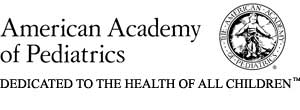

May 2003 — For most of us, May marks the beginning of warm weather and outdoor fun. Each year the American Academy of Pediatrics issues summer safety tips that can help ensure your family has a safe and happy summer. Keep these handy over the next few months as you begin your summer outings and activities.
Fun in the Sun
For Older Children:
For Young Children:
Pool Safety
Bug Safety
Lawn Mover Safety
How can
I tell if a helmet will keep my child safe?
You should only buy a helmet that meets the bicycle helmet safety
standards of the Consumer Product Safety Commission (CPSC). Any helmet
meeting these standards is labeled. Check the inside.
Do all helmets
meet these standards?
All helmets manufactured or imported for use after March 1999 must
comply with a mandatory safety standard issued by the CPSC. Older
helmets certified by the American Society for Testing and Materials
(ASTM) or Snell Memorial Foundation may continue to be used.
Can other kinds
of helmets be used for bicycling?
Each type of helmet is designed for protection in specific conditions
and may not offer enough protection in bike accidents or falls. Bike
helmets are very protective in head-first falls at fairly high speeds,
and are light and well ventilated for comfort and acceptability. A
multisport helmet, certified to meet the CPSC standard for bicycle
helmets, also is acceptable.
Where can I get
a helmet?
Helmets meeting CPSC safety standards are available at bicycle shops and
at some discount, department, and toy stores in adult, toddler, and
children's sizes and styles. Do not resell, donate, or buy a used bike
helmet because it may be too old to provide protection or may have been
in a crash.
What are the
various merits of the 2 types of helmets, hard shell and soft shell?
The essential part of the helmet for impact protection is a thick layer
of firm polystyrene, plastic foam, that crushes on impact, absorbing the
force of the blow. All helmets require a chin strap to keep them in
place in a crash.
Hard-shell helmets also have a hard outer shell of plastic or fiberglass that provides a shield against penetration by sharp objects and holds the polystyrene together if it cracks in a fall or crash. These -helmets are more sturdy, but tend to be heavier and warmer than the soft-shell models.
Soft-shell helmets have no hard outer shell but are made of an extra-thick layer of polystyrene -covered with a cloth cover or surface coating. The cloth cover is an essential part of many soft-shell helmets. If the helmet comes with a cover, the cover must always be worn to hold the helmet together if the polystyrene cracks on impact. Both types meet CPSC standards; the main difference is style and comfort.Although there is no consensus on the relative safety of the 2 types, models of both types have passed the CPSC test. The soft-shell helmets are lighter than the hard-shell versions but may be less durable.
Are there
helmets for infants?
Yes. Many infant-sized helmets are of the soft-shell variety. They are
light, an important consideration for small children whose necks may not
be strong enough to comfortably hold a hard-shell helmet. Babies younger
than 1 year have relatively weak neck structure. Neither helmets nor
bike traveling is recommended for them.
How long will a
child's helmet fit?
An infant's or child's helmet should fit for several years. Most models
have removable fitting pads that can be replaced with thinner ones as
the child's head grows.
Can a helmet be
reused after an accident?
In general, a helmet that has been through a serious fall or accident
should be retired with gratitude. It has served its purpose and may not
provide adequate protection in another crash. If you are uncertain
whether the helmet is still usable, throw it away.
Dear Parent,
Your child is old enough to start learning how to prevent injuries. Be a good example—wear your helmet!
It takes time to form a safety habit. Teach and continually remind your child about these safety messages. Make safety a big part of your lives.
Wear a helmet yourself.
Children learn best by observing you. Whenever you ride your bike, put
on your helmet. Plan bicycle outings during which all family members
wear their helmets to further reinforce the message. The most important
factor influencing children to wear helmets is riding with an adult who
wears a helmet.
Talk to your children about why you want them to protect their heads.
There are many things you can tell your children to convince them of the
importance of helmet use.
Don't let children
ride their bikes unless they wear their helmets.
Be consistent. If you allow your children to ride occasionally without
their helmets, they won't believe that helmet use really is important.
Tell your children they have to find another way to get where they are
going if they don't want to use their helmets.
Encourage your
children's friends to wear helmets.
Peer pressure can be used in a positive way if several families in the
neighborhood start making helmet use a regular habit at the same time
The recommendations in this statement do not indicate an exclusive course of treatment or serve as a standard of medical care. Variations, taking into account individual circumstances, may be appropriate.